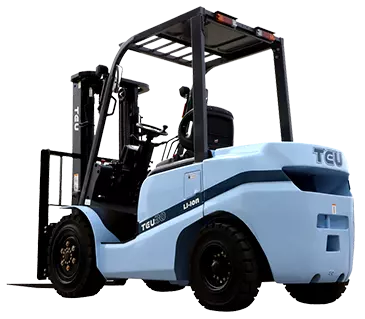In modern warehousing and logistics management, forklifts are widely used in various enterprises as important material handling tools. With the advancement of technology and the improvement of environmental awareness, electric forklifts and diesel forklifts have become two mainstream choices. They each have different characteristics and advantages. When choosing a forklift, enterprises need to decide based on actual needs.
Power source: the difference between electric and diesel
The most intuitive difference is the power source of the two. Electric forklifts rely on batteries for power, usually lead-acid batteries or lithium batteries. Diesel forklifts are powered by internal combustion engines burning diesel. The power system of electric forklifts is relatively cleaner because there are no pollutants emitted, which meets modern environmental standards; while diesel forklifts produce certain exhaust emissions. Although their work intensity is high, they will have a certain impact on the environment.
Environmental protection and economy
Electric forklifts have obvious advantages in environmental protection. With the increasing requirements for corporate emissions, the zero-emission characteristics of electric forklifts have made it a practitioner of environmental protection concepts. In contrast, although diesel forklifts have strong power performance and are suitable for working under heavy load conditions, their fuel consumption and exhaust emissions are relatively high, and long-term use may put pressure on the environment and corporate social responsibility.
From an economic perspective, the operating cost of electric forklifts is relatively low. Although the price of electric forklifts is relatively high when purchased, their electricity costs are lower than diesel costs, and their maintenance costs are relatively lower. The battery has a long service life and is relatively simple to maintain, which reduces the workload of maintenance personnel. Diesel forklifts have high fuel and maintenance costs, especially under high-intensity operations, the frequency and cost of maintenance are relatively large.
Operational performance and applicable environment
In terms of performance, electric forklifts are suitable for indoor and environments with strict requirements on noise and emissions. Electric forklifts are easy to operate, low in noise, and run smoothly. They are suitable for long-term work, and will not affect the working environment due to emissions. Therefore, they are particularly suitable for use in closed spaces such as warehouses and shopping malls.
Powerful diesel forklifts are suitable for outdoor working environments with large loads, long periods of time and high intensity. Especially in places such as heavy load handling, extreme temperatures or rugged terrain, diesel forklifts perform better. In addition, diesel forklifts have a faster refueling speed, which is suitable for companies that do not have charging facilities or high-frequency operation needs.
Maintenance and use costs
Electric forklifts have low maintenance costs due to their relatively simple structure and lack of complex systems of internal combustion engines. The battery has a long service life and is not affected by fuel price fluctuations, so the company’s long-term use costs are more stable. However, battery life is directly related to the quality of maintenance, and companies need to check the battery regularly to avoid loss.
Maintenance of diesel forklifts requires regular inspection of the engine, oil system and fuel consumption. As the service life increases, the maintenance cost of diesel forklifts is high, especially the maintenance costs of key components such as engines and transmission systems are also relatively expensive.
Long-term use and convenient charging
In terms of charging and refueling, electric forklifts need to be charged regularly, and the charging time is long, generally 4 to 8 hours, while diesel forklifts can be refueled quickly, which is suitable for companies that need high-frequency operations. The charging equipment of electric forklifts requires a special place, while diesel forklifts can be easily solved at gas stations or the company’s own refueling facilities.
Summary: How to choose a suitable forklift?
Electric forklifts and diesel forklifts have their own advantages and disadvantages. When choosing, companies need to consider factors such as the use environment, workload and budget. If the company pays attention to environmental protection and a quiet working environment, and mainly uses it for indoor operations, electric forklifts are undoubtedly a better choice. If the company needs to perform heavy-duty operations outdoors or has a demand for refueling convenience, a highly efficiency diesel forklift is more suitable.
Overall, choosing a suitable forklift can not only improve work efficiency, but also effectively reduce operating costs. Whether it is an electric forklift or a diesel forklift, when choosing, companies should make the most appropriate decision based on their specific needs to help the company’s efficient development and sustainable operation.





